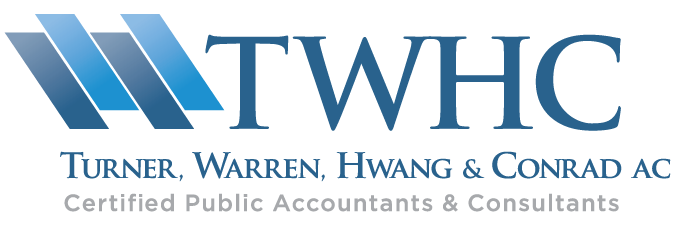Reminder: Rules for Depreciation and Expensing
As part of the final guidance issued that pertains to the Tax Cuts and Jobs Act of 2017, new rules and limitations are in effect for taxpayers who deduct depreciation for qualified property acquired after September 27, 2017. As a business owner, they could affect your tax situation. Let’s take a closer look:
Businesses Can Immediately Expense More Under Tax Reform
A taxpayer may elect to expense the cost of any section 179 property and deduct it in the year the property is placed in service. These changes apply to property placed in service in taxable years beginning after December 31, 2017.
As a reminder, the new law increased the maximum deduction from $500,000 to $1 million. It also increased the phase-out threshold from $2 million to $2.5 million. For taxable years beginning after 2018, these amounts of $1 million and $2.5 million will be adjusted for inflation. As such, for tax year 2022, the Section 179 expense deduction increases to a maximum deduction of $1,080,000 of the first $2,700,000 of qualifying equipment placed in service during the current tax year. For 2021, the maximum deduction was $1,050,000 and $2,620,000, respectively.
The new law also expands the definition of Section 179 property to allow the taxpayer to elect to include the following improvements made to nonresidential real property after the date when the property was first placed in service:
-
- Qualified improvement property, which means any improvement to a building’s interior.
Improvements do not qualify if they are attributable to the enlargement of the building, any elevator or escalator, or the internal structural framework of the building.
- Roofs, HVAC, fire protection systems, alarm systems, and security systems.
Temporary 100 Percent Expensing for Certain Business Assets
The new law increases the bonus depreciation percentage from 50 percent to 100 percent for qualified property acquired and placed in service after September 27, 2017, and is sometimes referred to as the first-year bonus depreciation.
As a reminder, the bonus depreciation percentage for qualified property that a taxpayer acquired before September 28, 2017, and placed in service before January 1, 2018, remains at 50 percent. Special rules apply for longer production period property and certain aircraft.
The definition of property eligible for 100 percent bonus depreciation was expanded to include used qualified property acquired and placed in service after September 27, 2017, if all the following factors apply:
- The taxpayer or its predecessor didn’t use the property at any time before acquiring it.
- The taxpayer didn’t acquire the property from a related party.
- The taxpayer didn’t acquire the property from a component member of a controlled group of corporations.
- The taxpayer’s basis of the used property is not figured in whole or in part by reference to the adjusted basis of the property in the hands of the seller or transferor.
- The taxpayer’s basis of the used property is not figured under the provision for deciding basis of property acquired from a decedent.
- Also, the cost of the used property eligible for bonus depreciation doesn’t include the basis of property determined by reference to the basis of other property held at any time by the taxpayer (for example, in a like-kind exchange or involuntary conversion).
Furthermore, qualified film, television, and live theatrical productions also qualify as qualified property that may be eligible for 100 percent bonus depreciation. This provision applies to property acquired and placed in service after September 27, 2017.
Certain types of property, however, are not eligible for bonus depreciation in any taxable year beginning after December 31, 2017. One such exclusion from a qualified property is for property primarily used in the trade or business of the furnishing or sale of the following:
- Electrical energy, water or sewage disposal services,
- Gas or steam through a local distribution system or
- Transportation of gas or steam by pipeline.
This exclusion applies if the rates for the furnishing or sale have to be approved by a federal, state, or local government agency, a public service or public utility commission, or an electric cooperative.
The new law also adds an exclusion for any property used in a trade or business that has had floor-plan financing indebtedness if the floor-plan financing interest was taken into account under section 163(j)(1)(C). Floor-plan financing indebtedness is secured by motor vehicle inventory in a business that sells or leases motor vehicles to retail customers.
The new law eliminated qualified improvement property acquired and placed in service after December 31, 2017, as a specific category of qualified property.
Depreciation Limitations on Luxury Automobiles and Personal Use Property
Depreciation limits for passenger vehicles acquired after December 31, 2017, and placed in service in 2022 have also changed:>/p>
If the taxpayer doesn’t claim bonus depreciation, the greatest allowable depreciation deduction is:
If a taxpayer claims 100 percent bonus depreciation, the greatest allowable depreciation deduction is:
- $19,200 for the first year,
- $18,000 for the second year,
- $10,800 for the third year, and
- $6,460 for each later taxable year in the recovery period.
- $11,200 for the first year,
- $18,000 for the second year,
- $10,800 for the third year, and
- $6,460 for each later taxable year in the recovery period.
Computers or peripheral equipment have been removed from the definition of listed property. This change applies to property placed in service after December 31, 2017.
Treatment of Certain Farm Property
The new law shortens the recovery period for machinery and equipment used in a farming business from seven to five years. This shorter recovery period, however, doesn’t apply to grain bins, cotton ginning assets, fences or other land improvements. The original use of the property must occur after December 31, 2017. This recovery period is effective for eligible property placed in service after December 31, 2017.
Also, property used in a farming business and placed in service after December 31, 2017, is not required to use the 150 percent declining balance method. However, if the property is 15-year or 20-year property, the taxpayer should continue to use the 150 percent declining balance method.
Applicable Recovery Period for Real Property
The new law keeps the general recovery periods of 39 years for nonresidential real property and 27.5 years for residential rental property. The new law changes the alternative depreciation system recovery period for residential rental property from 40 years to 30 years.
Qualified leasehold improvement property, qualified restaurant property and qualified retail improvement property are no longer separately defined and no longer have a 15-year recovery period under the new law. These changes affect property placed in service after December 31, 2017.
Under the new law, a real property trade or business electing out of the interest deduction limit must use the alternative depreciation system to depreciate any of its nonresidential real property, residential rental property, and qualified improvement property. This change applies to taxable years beginning after December 31, 2017.
Alternative Depreciation System for Farming Businesses
Farming businesses that elect out of the interest deduction limit must use the alternative depreciation system to depreciate any property with a recovery period of 10 years or more, such as single-purpose agricultural or horticultural structures, trees or vines bearing fruit or nuts, farm buildings, and certain land improvements. This provision applies to taxable years beginning after December 31, 2017.
Questions?
Tax law can be confusing. If you’re a small to medium-sized business owner with questions about depreciation and expensing, help is just a phone call away.





